Papers by Ala Vahidnia آلاء وحیدنیا
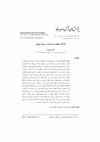
Analyzing numerous and diverse Iranian Qur’an manuscripts surviving from the past, may shed furth... more Analyzing numerous and diverse Iranian Qur’an manuscripts surviving from the past, may shed further light on the history of transmission of the text of the Qur’an and the history of Shi’ism in Persia, a vast important region of Muslim geography. This article deals with studying the Qur’an manuscripts dating from the rise of copying the Qur’an and the formation of the Qur’an reading circles in Persia following the return of peace to the land, approximately a century after the Mongol invasion and particularly since the emergence of the Safavid state as the first national state in Persia in Islamic times. As reflected in this study, upon the decline of brilliant, inspirational, and independent reading circles, e.g. the early circles of Khorasan after the Mongol invasion, they were in time inspired by those standardized abroad and rose once again by recognizing the standard ‘seven readings’. Variant readings preferred by Persian Shi’a and the forms of recording them in the Qur’an manuscripts copied in the Safavid Persia are indicative of the fact that Persians and Ottomans concertedly preferred the reading of Ḥafṣ narrating from ‘Ᾱṣim. They frequently attested variant readings of Shuʻbah narrating from ‘Ᾱṣim, as their secondly and sometimes as the main and primary preferred reading.
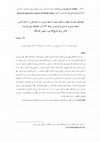
در میان نسخههای کهن قرآنی متعلق به قرون نخست اسلامی، مجموعهای از مصاحف خطی یافت میشود که نظام ... more در میان نسخههای کهن قرآنی متعلق به قرون نخست اسلامی، مجموعهای از مصاحف خطی یافت میشود که نظام آوانگاری ثبت شده در آنها ویژگی خاصی در اعرابگذاری هاء ضمیر مفرد مذکر نشان میدهد. در این دست مصاحف هاء ضمیر مفرد مذکر که گاه از آن تعبیر به هاء کنایه میشود در کلماتی که قبل از آن یاء ساکنه یا کسره آمده باشد همچون: "الیه"؛ "فیه"؛ "علیه"؛ "اخیه"؛ "بعدِه"؛ "فضلِه" و... همچنین هاء متصل به فعل مجزوم که از آن تعبیر به هاء اضمار میشود در کلماتی چون: "یُؤَدِّه"؛ "نُؤته"؛ "یَتَّقْه"؛ "نُصْلِه" و ... دارای علامت ضمه هستند. تنها مورد استثناء در این دسته، واژه "به" است که علامت کسره را برای هاء نشان میدهد. بررسی سه نسخه تقریباً کامل، از میان چندین نسخه یافت شده با این خصوصیت نشان داد که این مصاحف نه تنها دارای خصوصیات مشترک نسخهشناختی همچون خط نگارش و قطع مصحفاند. بلکه ویژگیهای متنی و قرائی موجود در این مصاحف تعلق به مکتب بصره را در هر سه نسخه نشان میدهد. بنابراین با مجموعهای از مصاحف همبسته مواجهایم که احتمالا مابین اواخر قرن دوم تا اواخر قرن چهارم، در منطقه بصره و توابع آن همچون مناطقی از ایران تولید شدهاند.

Der Islam, 2021
In studies of early Qurʾānic manuscripts, determining the provenance of these manuscripts is a th... more In studies of early Qurʾānic manuscripts, determining the provenance of these manuscripts is a thorny issue because in most cases they lack endowment notes or colophons. The reports in early Islamic sources regarding textual variants of regional codices (maṣāḥif al-amṣār) may contribute to find a solution to this problem. A list of regional variants, mostly based on al-Dānī's al-Muqniʿ, can be found in Nöldeke et al.'s The History of the Quran. However, as the authors have stated, a comparison of some of the early Qurʾānic manuscripts in the Topkapı Sarayı Museum with this table of maṣāḥif al-amṣār variants indicates that the traditional reports are unreliable for identifying the provenance of Qurʾānic manuscripts because none of these codices can be attributed to any particular region. The present article is an attempt to demonstrate that this problem results from relying solely on the data provided by al-Dānī and ignoring earlier and more significant sources, such as al-Sijistānī's Kitāb al-Maṣāḥif. It attempts to provide a new and more precise classification of regional variants by reading afresh the reports on the features of maṣāḥif al-amṣār, taking into account the sources which were not used by Nöldeke et al., especially al-Sijistānī's Kitāb al-Maṣāḥif, thus making the list of maṣāḥif al-amṣār variants more accurate, thereby the variants of each of these early Qurʾānic Codices tally more with the reports preserved for the characteristics of one of the maṣāḥif al-amṣār in literary sources. As the texts of the surviving manuscripts are not of a diverse nature we are able, with some certainty, to draw conclusions that substantiate the reports as to the peculiarities of the muṣḥafs of different cities.
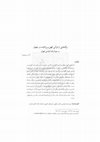
Old Qur’ans, belonging to the early Islamic centuries, particularly the first three centuries, ar... more Old Qur’ans, belonging to the early Islamic centuries, particularly the first three centuries, are rare and, for that reason, precious. Folios of one of the few Kufi copies of the Qur’an are kept at Tehran’s Reza Abbasi Museum. Although the folios are separate from one another, and even dated differently ranging between 3rd-4th centuries, indeed, they all belong to the same Qur’an. Since nearly forty years ago, other folios of this holy book have found their way to London auctions and, from there, to museums and private collections in other parts of the world, their transcription date having been reckoned at the 2nd century A.H. and the Abbasid time.
The present article tries to explore and introduce the existing 9 folios of the Qur’an in the Reza Abbasi Museum as well as some other folios outside of Iran, with a view to demonstrating its unique visible as well as textual features of this Qur’an, some of which, such as the rare readings and orthography of words, are exceptionally interesting.
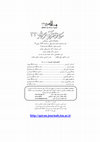
Masculinity is attributed to the Qur’an by Ibn Mas‘ūd (d. 32/652) who called reciters to treat it... more Masculinity is attributed to the Qur’an by Ibn Mas‘ūd (d. 32/652) who called reciters to treat it as such and mainly opt for yā’ in cases of doubt in selecting between tā’ and yā’. Striving for an appreciation of the claim is conducive, in Arabs’ conception, to conceiving as masculine what is divinely accorded any worth and significance. Accordingly, hadith scholars and litterateurs have referred to themselves as masculine and have termed their disciplines as such. Furthermore, considering the great impacts of Ibn Mas‘ūd on the readings adopted by reciters flourishing in early Islamic times and his report that resembles a reading principle, the present study investigates the reciters’ degrees of such impact ability. Aiming at studying the significance of the reading principle in question on the ‘seven readings’, the present study provides a textual analysis of the reports, with an eye to their transmission authorities, and approximate times and places of their transmission. On the other hand, the readings that are equivocal as to the masculinity and femininity of verbal forms have been provided along with the degrees of masculinity in each report. The study reveals that readings by Ḥamza, Kisā’ī, and ‘Ᾱṣim are, in descending order, indicative of utmost masculinity, beaconing Ibn Mas‘ūd’s profound impact on Kufan readings, since such reports found further prevalence in Kufa. The topic treated in this article is unprecedented in the literature devoted to the disciplines in question.
Books by Ala Vahidnia آلاء وحیدنیا
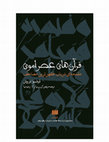
قرآنهاي عصر اموي نخستين بار، سير تحول سريع قرآن نويسي طي دوران اموي (40ـ132 قمري) را بر پايهي م... more قرآنهاي عصر اموي نخستين بار، سير تحول سريع قرآن نويسي طي دوران اموي (40ـ132 قمري) را بر پايهي مجموعهاي از مواد و منابع کهن بررسي کرده است. مؤلف تقويمي از تحولات مختلف ارائه ميدهد که همگي نشان از اين دوران نخست دارند و در اين راه، ترکيبي از فنون مختلف از جمله خطشناسي، تاريخ هنر، نسخهشناسي، کتيبهشناسي، و سير تحول رسمالخط قرآني را بهکار ميگيرد. وي نام مصاحف اموي را از آن رو برميگزيند که عموم اين مصاحف تا پايان حکومت يا دهههاي پس از امويان، اما متأثر از فضا و نظام مصحف نگاري اين دوران کتابت شدهاند. نتايج حاصل آمده در اين کتاب، برخي گزارشهاي سنتي درباب کتابت قرآن در روزگار نخست را به چالش ميکشد و پرتوي تازه بر جايگاه امويان در انتشار دستنوشتههاي قرآني ميافکند.
فرانسوا دروش (متولد 1952؛ دکتري تاريخ در 1987 از سوربن) اسلامپژوه، مورخ و نسخهشناسِ متون عربي و محقق در حوزهي مخطوطات کهن قرآني، سالها پژوهشگر بخش مخطوطات عربي و مصاحف قرآني کتابخانهي ملي فرانسه، و از سال 1990، مدير بخش تاريخ و فيلولوژي و مدرس تاريخ و کتيبهشناسي عربي در École pratique des hautes études، بوده است. از وي مقالات و کتابهاي فراواني در حوزهي مخطوطات عربي، بهويژه نسخههاي کهن قرآني انتشار يافته است. اثر حاضر برگزيدهي بيست و سومين دورهي جايزهي جهاني کتاب سال جمهوري اسلامي ايران در بهمن 1394 بوده است.
قرآنهاي عصر اموي، نوشتهي فرانسوا دِروش، ترجمه به فارسي، تهران: انتشارات هرمس با همکاري مرکز و کتابخانه مطالعات اسلامي به زبانهاي اروپايي، 1394.
Conference Presentations by Ala Vahidnia آلاء وحیدنیا
Call for Papers
First International Conference on Qur’anic Studies
24-25 February 2020
Institut... more Call for Papers
First International Conference on Qur’anic Studies
24-25 February 2020
Institute for Humanities and Cultural Studies
Tehran, Iran
چهاارمین هم اندیشی جایگاه مطالعات قرآنی در تحول علوم انسانی " مبانی زبان شناختی- اصطلاح شناختی پژوهشهای میان
Manuscripts and Manuscript Studies of the Qurʾan in Iran, with Special Reference to MS 18 of Aste... more Manuscripts and Manuscript Studies of the Qurʾan in Iran, with Special Reference to MS 18 of Aste-E Quds in Mashhad
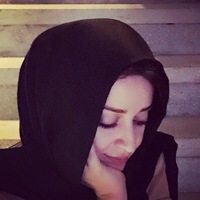

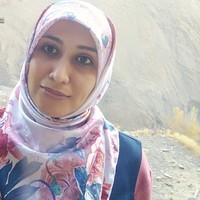
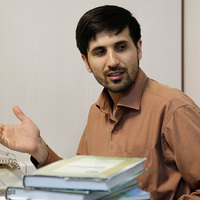
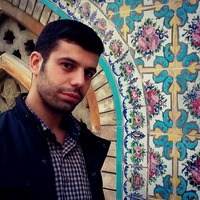





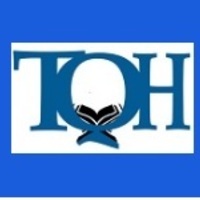
Uploads
Papers by Ala Vahidnia آلاء وحیدنیا
The present article tries to explore and introduce the existing 9 folios of the Qur’an in the Reza Abbasi Museum as well as some other folios outside of Iran, with a view to demonstrating its unique visible as well as textual features of this Qur’an, some of which, such as the rare readings and orthography of words, are exceptionally interesting.
Books by Ala Vahidnia آلاء وحیدنیا
فرانسوا دروش (متولد 1952؛ دکتري تاريخ در 1987 از سوربن) اسلامپژوه، مورخ و نسخهشناسِ متون عربي و محقق در حوزهي مخطوطات کهن قرآني، سالها پژوهشگر بخش مخطوطات عربي و مصاحف قرآني کتابخانهي ملي فرانسه، و از سال 1990، مدير بخش تاريخ و فيلولوژي و مدرس تاريخ و کتيبهشناسي عربي در École pratique des hautes études، بوده است. از وي مقالات و کتابهاي فراواني در حوزهي مخطوطات عربي، بهويژه نسخههاي کهن قرآني انتشار يافته است. اثر حاضر برگزيدهي بيست و سومين دورهي جايزهي جهاني کتاب سال جمهوري اسلامي ايران در بهمن 1394 بوده است.
قرآنهاي عصر اموي، نوشتهي فرانسوا دِروش، ترجمه به فارسي، تهران: انتشارات هرمس با همکاري مرکز و کتابخانه مطالعات اسلامي به زبانهاي اروپايي، 1394.
Conference Presentations by Ala Vahidnia آلاء وحیدنیا
First International Conference on Qur’anic Studies
24-25 February 2020
Institute for Humanities and Cultural Studies
Tehran, Iran
The present article tries to explore and introduce the existing 9 folios of the Qur’an in the Reza Abbasi Museum as well as some other folios outside of Iran, with a view to demonstrating its unique visible as well as textual features of this Qur’an, some of which, such as the rare readings and orthography of words, are exceptionally interesting.
فرانسوا دروش (متولد 1952؛ دکتري تاريخ در 1987 از سوربن) اسلامپژوه، مورخ و نسخهشناسِ متون عربي و محقق در حوزهي مخطوطات کهن قرآني، سالها پژوهشگر بخش مخطوطات عربي و مصاحف قرآني کتابخانهي ملي فرانسه، و از سال 1990، مدير بخش تاريخ و فيلولوژي و مدرس تاريخ و کتيبهشناسي عربي در École pratique des hautes études، بوده است. از وي مقالات و کتابهاي فراواني در حوزهي مخطوطات عربي، بهويژه نسخههاي کهن قرآني انتشار يافته است. اثر حاضر برگزيدهي بيست و سومين دورهي جايزهي جهاني کتاب سال جمهوري اسلامي ايران در بهمن 1394 بوده است.
قرآنهاي عصر اموي، نوشتهي فرانسوا دِروش، ترجمه به فارسي، تهران: انتشارات هرمس با همکاري مرکز و کتابخانه مطالعات اسلامي به زبانهاي اروپايي، 1394.
First International Conference on Qur’anic Studies
24-25 February 2020
Institute for Humanities and Cultural Studies
Tehran, Iran